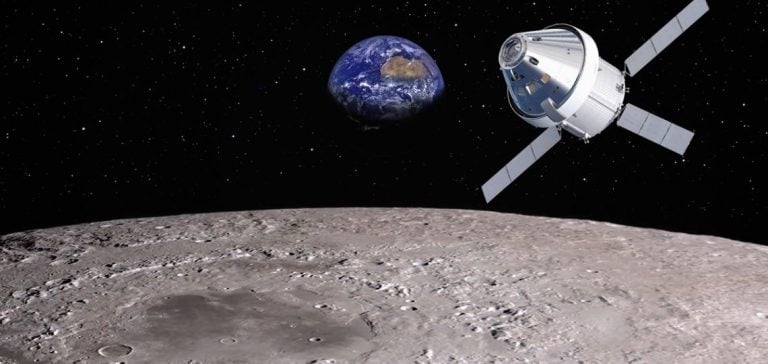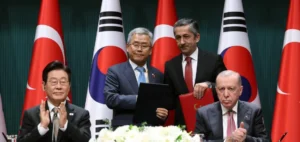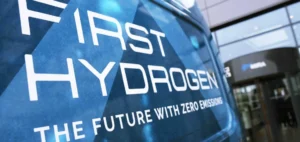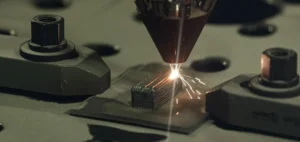NANO Nuclear Space, a new subsidiary of NANO Nuclear Energy, is positioning itself to adapt its micronuclear reactors for use in space. These portable reactors, initially designed for terrestrial applications, could meet the specific energy needs of space missions.
Among the flagship projects, the ZEUS and ODIN reactors will be optimized for missions in orbit around the Moon, a key area for future commercial and scientific activities.
Cis-lunar space, defined as the region between the Earth and the Moon, represents a strategic challenge for the space industry.
This sector is booming, stimulated by private and public initiatives seeking to exploit lunar resources, while developing sustainable infrastructures to support human presence.
NANO Nuclear’s compact, powerful micronuclear reactors could provide a viable solution for powering equipment and infrastructure in this challenging environment.
Practical applications in cis-lunar space
NANO Nuclear Space’s current projects focus mainly on providing energy for orbital stations and lunar bases.
The ZEUS reactor, a solid-state nuclear battery, and the ODIN reactor, using a low-pressure cooling system, are technologies suited to these contexts, where reliability and energy autonomy are critical.
Indeed, space presents unique challenges in terms of temperature, radiation and insulation, requiring resilient energy systems.
NANO Nuclear relies on the ability of its reactors to operate in isolated environments, where support resources are limited.
In the context of cis-lunar missions, these reactors could not only power manned facilities, but also play a key role in lunar resource extraction, in-orbit manufacturing, and potentially in the propulsion of long-distance missions.
This diversification of applications represents a strategic opportunity for NANO Nuclear, which aims to capitalize on the boom in commercial space projects.
Strategic outlook and challenges
The development of micronuclear reactors for space is part of a wider trend to diversify energy sources for space exploration.
While traditional space agencies such as NASA and ESA are increasingly turning to public-private partnerships, companies like NANO Nuclear are looking to get involved in these initiatives.
Cis-lunar space, with projects such as NASA’s Artemis, represents an immediate field of application for these technologies.
Nuclear reactors could become essential for continuously powering lunar bases and other critical infrastructures.
At the same time, the growing interest in exploiting lunar resources, particularly the extraction of rare elements, opens up significant economic prospects.
Sustainable energy systems, such as those proposed by NANO Nuclear, will be crucial to support these activities in the long term, minimizing dependence on terrestrial supplies.
This energy independence would ensure continuity of operations, even in environments where maintenance and resupply are complex.
Cutting-edge technology and international collaboration
NANO Nuclear’s recent acquisition of Annular Linear Induction Pump (ALIP) technology, developed by Carlos O. Maidana, Ph.D., represents a major technological advance for cooling and thermal management in nuclear reactors. This innovation improves the management of high-temperature fluids, which is crucial to the energy efficiency and safety of nuclear systems in space environments. In addition to its applications in heat management, this technology could be extended to propulsion systems, opening up new possibilities for longer-term missions in space. International cooperation also plays a key role in the development of these projects. Partnerships with state and private players around the world, including the USA and Europe, will be needed to finance and test these reactors under real-life conditions. Tests planned in environments simulating lunar and Martian conditions will be crucial to validate the technical feasibility of these reactors before they are deployed in space.
A future focused on energy resilience
The adaptation of micronuclear reactors for space missions marks a turning point in the evolution of energy technologies.
As energy requirements increase with the intensification of activities in space, the question of infrastructure resilience becomes paramount.
Portable, autonomous reactors, such as those developed by NANO Nuclear, offer an appropriate response to these challenges.
Their ability to operate for extended periods without frequent maintenance makes them ideal candidates for missions in remote and difficult-to-access areas.
Space, with its inherent challenges of radiation, vacuum and extreme temperatures, represents an ideal laboratory for testing these technologies.
If these reactors prove their reliability in these hostile environments, they could also have terrestrial applications, particularly in remote areas or in emergency situations.
The deployment of these reactors could thus transform energy supply in contexts where traditional infrastructures are unavailable or unsuitable.






















